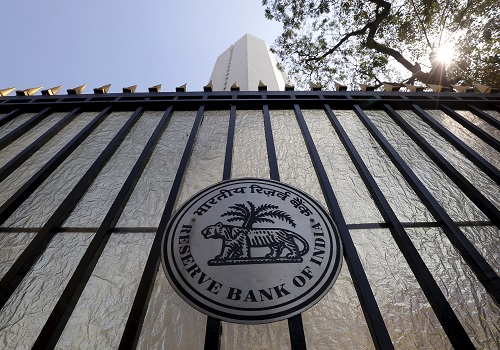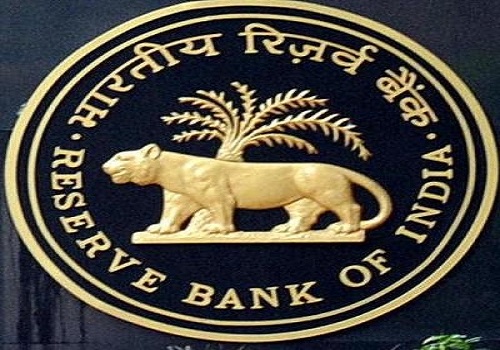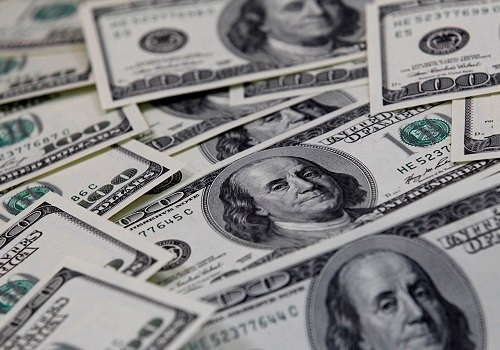Jeera trading range for the day is 23410-25410 - kedia Advisory

Follow us Now on Telegram ! Get daily 10 - 12 important updates on Business, Finance and Investment. Join our Telegram Channel
Gold
Gold exhibited a gain of 0.24%, settling at 62301, driven by a weakened U.S. dollar and bond yields. Investors eagerly await a key inflation report and comments from Federal Reserve officials to glean insights into potential interest rate adjustments. Recent remarks from Fed policymakers have indicated a lack of urgency in cutting rates before June, with New York Federal Reserve President John Williams suggesting a potential rate cut later in the year, despite robust inflation and labor market data in January. The CME FedWatch Tool indicates a 63% likelihood of a Fed rate cut in June, reflecting market expectations. This week, attention is focused on 10 scheduled speeches by Fed officials, while the core personal consumption expenditures price index, the Fed's preferred inflation gauge, is due on Thursday. China's net gold imports via Hong Kong surged by 51% in January, reaching 76.248 metric tons compared to December's 50.381 tons. Total gold imports via Hong Kong rose by 37% to 81.967 tons, signaling strong demand in the world's leading gold consumer. Technically, the gold market is undergoing short covering, evidenced by a 0.28% drop in open interest to settle at 12996, accompanied by a price increase of 152 rupees. Gold finds support at 62195, and a breach could test 62085, while resistance is anticipated at 62400, with a move above potentially leading to a test of 62495. Traders should closely monitor these dynamics for potential shifts in sentiment and price trends.
Trading Ideas:
* Gold trading range for the day is 62085-62495.
* Gold prices inched up buoyed by a weaker U.S. dollar and bond yields
* Fed policymakers suggested the U.S. central bank was in no rush to cut interest rates
* Markets are currently pricing in a 63% chance of a Fed rate cut in June, according to the CME FedWatch Tool.
Silver
Silver faced a decline of -0.5%, settling at 69085, as investors awaited key U.S. economic data for directional cues. Kansas City Federal Reserve Bank President Jeffrey Schmid emphasized the central bank's reluctance to rush into interest rate cuts, a sentiment echoed in the FOMC minutes, revealing a cautious approach. Traders, initially anticipating a reduction in March, now project a 53% likelihood of a 25bps cut in June. Despite near-term fluctuations, silver is anticipated to see an upward trajectory this year, driven by a weakening dollar and lower Treasury yields expected from the Fed's shift towards a more accommodative monetary policy. Fed Governor Christopher Waller advocated delaying rate cuts to assess the sustainability of January's inflation report, while Fed Vice Chair Philip Jefferson expressed cautious optimism about progress on inflation. Recent data indicating higher-than-expected U.S. consumer and producer prices dampened hopes for an early interest rate cut, putting pressure on bullion prices. Philadelphia Fed President Patrick Harker hinted at an eventual interest rate cut, though uncertainty remains regarding the timing. Technically, the silver market witnessed long liquidation, with a substantial -95.45% drop in open interest to settle at 9320, accompanied by a price decrease of -345 rupees. Support for silver is identified at 68730, and a breach could test 68380, while resistance is anticipated at 69555, with a move above potentially leading to a test of 70030.
Trading Ideas:
* Silver trading range for the day is 68380-70030.
* Silver settled flat as investors awaited key U.S. economic data.
* Fed’s Schmid said that the U.S. central bank is in no rush to cut interest rates.
* Fed’s Waller said that the central bank should delay rate cuts by at least another couple more months
Crude oil
Crude oil posted a gain of 0.74%, settling at 6514, driven by ongoing attacks from Houthi militants in the Red Sea, raising concerns about supply disruptions. The U.S. Federal Reserve signaled a potential delay in interest rate cuts, with Fed Governor Christopher Waller suggesting a postponement by at least two more months. This stance could impact economic growth and potentially curb oil demand. The Energy Information Administration (EIA) reported an increase in U.S. crude oil stockpiles by 3.5 million barrels to 442.9 million barrels, contrary to expectations of a 3.9 million-barrel rise. Additionally, crude stocks at the Cushing, Oklahoma delivery hub rose by 741,000 barrels to 29.5 million. Gasoline stocks fell by 294,000 barrels to 247 million barrels, while distillate stockpiles, including diesel and heating oil, declined by 4 million barrels to 121.7 million barrels. Refinery crude runs rose by 31,000 barrels per day, and refinery utilization rates remained unchanged at 80.6% for the week. These inventory dynamics suggest a mixed picture for crude oil, with rising stockpiles but notable declines in gasoline and distillate inventories. From a technical perspective, the crude oil market is experiencing fresh buying, with a 14.39% increase in open interest to settle at 6289, coupled with a price rise of 48 rupees. Support is identified at 6437, and a breach could test 6359, while resistance is anticipated at 6564, with a move above potentially leading to a test of 6613. Traders should closely monitor both geopolitical developments and inventory data for potential shifts in crude oil prices.
Trading Ideas:
* Crudeoil trading range for the day is 6359-6613.
* Crude oil gains as ongoing attacks in the Red Sea, sparking supply worries.
* The U.S. central bank indicated that interest rate cuts could be delayed by at least two more months.
* U.S. crude oil stockpiles rose while gasoline and distillate inventories fell last week, the EIA said.
Natural gas
Natural gas recorded a substantial gain of 3.7%, settling at 151.2, as producers actively worked to curb output amid a challenging market environment. Chesapeake Energy and other major gas producers, including Antero Resources, Comstock Resources, and EQT, announced significant cuts to their 2024 production plans in response to a sharp decline in prices. Despite these efforts, traders continue to grapple with a surplus of supply, high storage levels, and weak heating demand resulting from a mild winter. U.S. utilities withdrew 60 billion cubic feet of natural gas from storage in the week ending February 16, falling short of market expectations for a 64 bcf draw. The decrease brought total stockpiles to 2.470 trillion cubic feet (tcf), exceeding the five-year average by 451 bcf. U.S. natural gas prices had plummeted to their lowest since June 2020 at $1.522/MMBtu due to near-record production, ample fuel storage, and above-average temperatures. Technical issues at Freeport LNG's export facility further restricted gas flow to LNG export terminals. Technically, the natural gas market is experiencing short covering, evidenced by a -4.62% drop in open interest to settle at 65311, accompanied by a price increase of 5.4 rupees. Support for natural gas is identified at 145.1, and a breach could test 139.1, while resistance is anticipated at 155.2, with a move above potentially leading to a test of 159.3. Traders should closely monitor both production adjustments and storage levels for potential impacts on natural gas prices.
Trading Ideas:
* Naturalgas trading range for the day is 139.1-159.3.
* Natural prices rose amid efforts by producers to curb output.
* Chesapeake Energy has cut its 2024 production plans by around 30% following a sharp drop in prices to a 3-1/2 year low.
* Traders are grappling with a surplus of supply, high storage levels, and weak heating demand.
Copper
Copper marked a modest gain of 0.26%, settling at 726.9, driven by expectations that the upcoming annual parliamentary meeting in China might offer insights into additional economic stimulus measures. However, copper prices faced pressure as data revealed a rise in inventories in China, reaching a year-high of 181,323 tonnes post the Chinese New Year holiday. This increase came amid a backdrop of declining new home prices in China despite government efforts to boost confidence in the real estate sector. Investor attention shifted towards inflation data from the United States, Japan, and Europe, influencing expectations for future rate movements. The market also assessed the impact of China's stimulus and looser monetary policies on base metal demand, particularly copper. These developments align with the broader pessimism surrounding industrial demand in China, as reflected in four consecutive months of contractionary manufacturing PMI. The International Copper Study Group (ICSG) reported a surplus of 20,000 metric tons in the global refined copper market for December, reversing the 123,000 metric tons deficit in November. For the first 12 months of the year, the market showed an 87,000 metric tons deficit compared to a 434,000 metric tons deficit in the same period the previous year, according to the ICSG. From a technical perspective, the copper market is undergoing short covering, with a -0.68% drop in open interest to settle at 3948, accompanied by a price increase of 1.9 rupees. Support is identified at 725, with a potential test of 723.1 below, while resistance is likely at 728.7, and a move above could lead to testing 730.5.
Trading Ideas:
* Copper trading range for the day is 723.1-730.5.
* Copper rose on China’s hopes parliamentary meeting could provide clues on economic stimulus.
* Copper inventories rose in China, hurting prices, as January production rose past estimates.
* Copper inventories at SHFE rose to 181,323 tonnes following the Chinese new year holiday, hitting a year high.
Zinc
Zinc registered a modest gain of 0.19%, settling at 214.95, with the global zinc market deficit expanding to 62,600 metric tons in December 2023, compared to a deficit of 53,500 tons in November, according to data from the International Lead and Zinc Study Group (ILZSG). However, for the full year 2023, there was an overall surplus of 204,000 tons, in contrast to a deficit of 73,000 tons in 2022. Warehouse inventories monitored by the Shanghai Futures Exchange saw a substantial increase of 163.80% since the last release on February 8. China's refined zinc output in January 2024 decreased by 4.05% month-on-month to 567,000 metric tons but exhibited a year-on-year increase of 10.9%. The reduction in output can be attributed to smelter maintenance in various regions and the holiday-related shutdown of smelters in Yunnan and Guizhou, offset by the release of new production capacity in Guangxi. Concerns over weak consumer strength in China were highlighted as average daily new home sales plummeted by 34% year-on-year in January. This decline in consumer activity contributed to a significant drop in prices, marking the most substantial fall in 10 months. The pessimism is fueled by doubts about the effectiveness of Beijing's measures to stimulate property demand. Technically, the zinc market is witnessing fresh buying, evident in a 0.39% increase in open interest to settle at 4685, coupled with a price rise of 0.4 rupees. Support is identified at 214.3, with a potential test of 213.5 below, while resistance is likely at 216.1, and a move above could lead to testing 217.1.
Trading Ideas:
* Zinc trading range for the day is 213.5-217.1.
* Zinc gains as global market deficit increased to 62,600 metric tons in Dec 2023
* Inventories in Shanghai Futures Exchange warehouses rose by 163.80%
* China's refined zinc output in January 2024 decreased month-on-month by 4.05%
Aluminium
Aluminium recorded a gain of 0.56%, settling at 198.85, primarily driven by concerns over a potential nationwide strike in Guinea, a significant bauxite-producing region. The market fears that such a strike could disrupt the supply chain for bauxite, a key raw material for aluminium production. On the demand side, downstream aluminium companies are gradually resuming production, aided by the end of adverse weather conditions and the onset of the peak season. Short-term consumption is expected to improve, supported by low inventory levels and weak inventory growth. However, the recent opening of the aluminium ingot import window might limit the upward potential for aluminium prices. The market remains dynamic, and attention is required to monitor the impact of the potential strike in Guinea, consumption recovery, and the inventory trajectory for aluminium ingots and billets. Aluminium stocks in Shanghai Futures Exchange-monitored warehouses surged by 65.6% last week to the highest level since May of the previous year, reaching 173,482 tons. China's aluminium output in January showed a 4.2% year-on-year increase, reaching 3.562 million metric tons, while the daily average aluminium output remained steady month-on-month at 114,900 metric tons. From a technical standpoint, the aluminium market is undergoing short covering, evidenced by a -2.81% drop in open interest to settle at 5092, coupled with a price increase of 1.1 rupees. Support is identified at 198, with a potential test of 197.1 below, while resistance is likely at 199.5, and a move above could lead to testing 200.1.
Trading Ideas:
* Aluminium trading range for the day is 197.1-200.1.
* Aluminium gains as Guinea may hold a nationwide strike, may affect the supply of bauxite in Guinea
* The United States did not impose sanctions on Russian metal
* Aluminium stocks in SHFE warehouses jumped 65.6% last week to the highest since last May at 173,482 tons.
Cotton
Cotton prices, represented by Cottoncandy, recorded a substantial gain of 1.21%, settling at 61660, fueled by concerns over supply and sustained cotton consumption. The U.S. cotton balance sheet for 2023/24 showed lower ending stocks relative to the previous month, with higher exports and lower mill use, while production remained unchanged. The export forecast was raised by 200,000 bales to 12.3 million, reflecting a robust pace of shipments and sales. World 2023/24 cotton ending stocks decreased by nearly 700,000 bales, with lower beginning stocks and production reducing supplies. While world consumption remained virtually unchanged, with increases in China and Vietnam offset by reductions in Turkey, the United States, and Thailand. India's cotton exports are set to surge to the highest level in two years in February, driven by a rally in global prices, making Indian cotton attractive for Asian buyers. Indian traders signed contracts to export 400,000 bales, mainly to China, Bangladesh, and Vietnam, making Indian cotton the cheapest in the world. Despite a decline in domestic cotton production by 7.7% to 29.41 million bales in 2023/24, the Cotton Association of India (CAI) expects India's cotton exports to surpass earlier expectations, reaching 2 million bales. Technically, the cotton market is undergoing short covering, evident in a -5.73% drop in open interest to settle at 477, coupled with a price increase of 740 rupees. Support for Cottoncandy is identified at 61100, with a potential test of 60550 below, while resistance is likely at 62120, and a move above could lead to testing 62590.
Trading Ideas:
* Cottoncandy trading range for the day is 60550-62590.
* Cotton prices gained spurred by concerns over supply
* USDA weekly sales report a 69% increase in exports from previous week
* CAI estimates domestic consumption for the 2023-24 season to remain flat at 311 lakh bales.
* In Rajkot, a major spot market, the price ended at 28218.2 Rupees dropped by -0.39 percent.
Turmeric
Turmeric prices surged by 5.99% to settle at 16604, primarily driven by reduced supplies in the spot market. Despite this bullish momentum, buying activities have been somewhat subdued as market participants await the release of stocks ahead of the commencement of new crops. The delayed harvesting of new crops, coupled with tighter ending stocks, is anticipated to maintain upward pressure on turmeric prices in the near term. However, the upside potential is perceived as limited due to slower buying activities and the expectation of increased supply. Moreover, the pressure on prices is exacerbated by the improved crop condition resulting from favorable weather conditions, albeit with concerns over the location of PM Modi's Turmeric Board in Telangana sparking farmer concerns in Maharashtra. The anticipation of a 20–25% decline in turmeric seeding this year, particularly in key areas like Maharashtra, Tamil Nadu, Andhra Pradesh, and Telangana, underscores shifting priorities among farmers. This decline in seeding could potentially impact future supply dynamics and market sentiment. Conversely, turmeric imports in December 2023 showed a month-on-month decrease but a significant year-on-year increase, reflecting fluctuating demand-supply dynamics in the global market. From a technical perspective, the market is experiencing fresh buying interest, as evidenced by the increase in open interest by 0.03% alongside a substantial price increase of 938 rupees. Support levels for turmeric are identified at 16072, with a potential test of 15540 levels if breached. On the upside, resistance is expected at 16870, with a breakout potentially leading to a test of 17136 levels.
Trading Ideas:
* Turmeric trading range for the day is 15540-17136.
* Turmeric gains supported by reduced supplies in the spot market.
* However, upside seen limited as buying activities has been slower in expectation of new crops.
* Export has been slow down in recent months and expected to increase in wake of series of festivals ahead.
* In Nizamabad, a major spot market, the price ended at 14621.5 Rupees gained by 1.1 percent.
Jeera
Jeera faced a significant downturn in prices, settling down by -4.8% at 24120, primarily due to heightened production prospects in key cultivating regions of Gujarat and Rajasthan. The current rabi season witnessed a remarkable surge in jeera acreage, reaching a four-year high as farmers responded to record prices in the previous marketing season by expanding cultivation. This surge in acreage, particularly in Gujarat and Rajasthan, reflects a strong correlation between market prices and planting decisions. In Gujarat, jeera cultivation saw an impressive 160% increase, covering 5.60 lakh hectares compared to the previous year's 2.75 lakh hectares, surpassing the normal acreage for the state. Similarly, Rajasthan observed a 25% increase in cultivation, reaching 6.90 lakh hectares compared to 5.50 lakh hectares previously. However, despite the expanded cultivation, challenges such as lower water availability, reduced cold days, and concerns about crop diseases like fusarium wilt and blight remain prominent. The surge in domestic production coincides with a slump in global demand for Indian jeera, as buyers increasingly turn to alternative sources like Syria and Turkey due to higher prices in the Indian market. From a technical standpoint, the market is experiencing long liquidation, as evidenced by a significant drop in open interest by -10.99% alongside a substantial decrease in prices. Support levels for jeera are identified at 23760, with a potential test of 23410 levels if breached. Conversely, resistance is expected at 24760, with a breakout potentially leading to a test of 25410 levels.
Trading Ideas:
* Jeera trading range for the day is 23410-25410.
* Jeera prices dropped due to higher production prospects
* In Gujarat, Cumin sowing witnessed very strong growth by nearly 103% with 530,030.00 hectares against sown area of 2022
* Stockists are showing interest in buying on recent downfall in prices triggering short covering.
* In Unjha, a major spot market, the price ended at 27075.3 Rupees dropped by -1.02 percent.
Views express by all participants are for information & academic purpose only. Kindly read disclaimer before referring below views. Click Here For Disclaimer












 320-x-100_uti_gold.jpg" alt="Advertisement">
320-x-100_uti_gold.jpg" alt="Advertisement">









